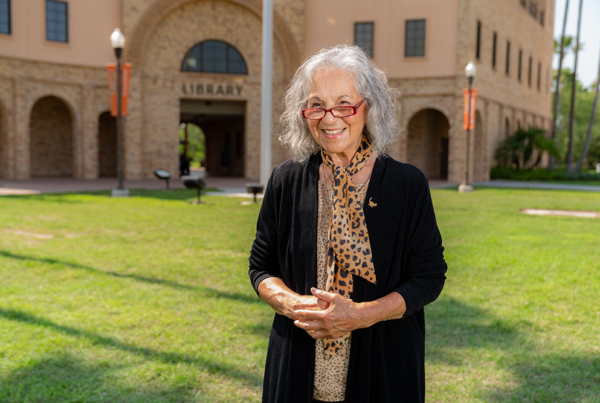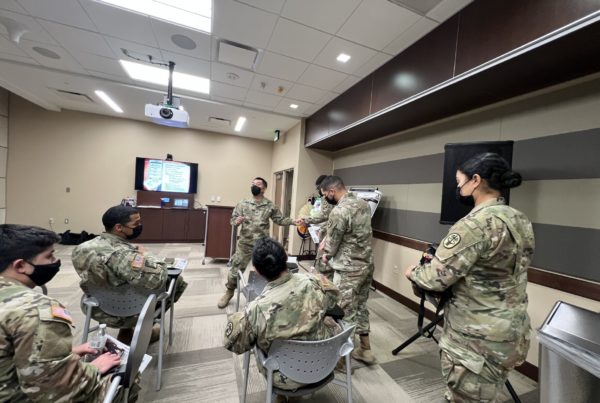Dozens of Texas colleges and universities currently meet the threshold to be defined as Hispanic-Serving Institutions. It’s a designation based primarily on undergraduate enrollment. At least 25% of undergrads need to be Hispanic to qualify.
The University of Texas at El Paso far exceeds that threshold at 84% of students identifying as Hispanic. It’s a figure that’s reflective of the area’s overall population. But it wasn’t always that way.
Former UTEP President Diana Natalicio made recruiting Hispanic students a focus of her 31-year tenure. That’s why a new UTEP institute – the Natalicio Institute for Hispanic Student Success – bears her name. Its goal is to reimagine what it truly means to be a Hispanic-Serving Institution.
 Inaugural executive director and professor Anne-Marie Núñez spoke with Texas Standard about this new institute and its plans. Listen to the interview above or read the transcript below.
Inaugural executive director and professor Anne-Marie Núñez spoke with Texas Standard about this new institute and its plans. Listen to the interview above or read the transcript below.
This transcript has been edited lightly for clarity:
Texas Standard: How do you imagine what it means to be a Hispanic serving university?
Anne-Marie Núñez: Well, beyond reaching the federal requirement for 25% enrollment of Hispanics, being a Hispanic-Serving Institution means creating organizational cultures and structures that affirm the cultural backgrounds and success of Hispanic and other minorities student groups. It’s very critical that HSIs create supportive educational environments and that they foster positive graduation, employment, civic and leadership outcomes for their student bodies. So it’s not enough just to enroll. All these have to be created.
And I understand there are several HSIs in Texas. Is that right?
That’s right. There are about 100 right now.
So what’s usually done when you reach that status?
That’s a really great question. I mean, so the federal designation is that the institution has to meet a 25% undergraduate enrollment of Hispanic students. And really, once the institution reaches that, according to the federal government, they must file some paperwork demonstrating that they’ve met that threshold. But once they’ve done that, they’re considered a Hispanic-Serving Institution by the federal government.
That’s not what you have in mind at UTEP. You want to take that a step further?
Exactly. And, just like Dr. Natalicio did, really what we wanted to do at the institute is focus on what the “serving” in Hispanic-Serving means in more depth and to generate and refine models of what my colleagues and I have come to call “Hispanic servingness.”
Can you give us some particular opportunities?
The first thing that comes to mind is an initiative that I’ve been involved in for about four years with the Computing Alliance of Hispanic-Serving Institutions, and it’s actually led by UTEP. And its goal is to raise Latinx attainments in computing, which is one of the least diverse fields by both race and gender in the U.S.
And so what they have done is create structures of academic, social, cultural, financial and career support for students. And there’s a variety of activities that they engage in to serve students in these multiple ways.
Other than the computing partnership, what else will you be focusing on?
A unique opportunity for the Diana Natalicio Institute for Hispanic Student Success is supporting research activities of a wide array of scholars. For students, the institute will also facilitate access to on-campus jobs, scholarships, leadership opportunities and professional development, which includes exposure to role models from Hispanic and other minoritized groups.
How are you going to measure the success of the institute?
So to increase, for example, the number of Hispanic students who go on to graduate school. And definitely raising overall Latinx attainment. Contributing to local, state and national policy dialogues and bills. Informing policy around how to build capacity in facilities for students’ success. That would be another really important goal of the institute.














